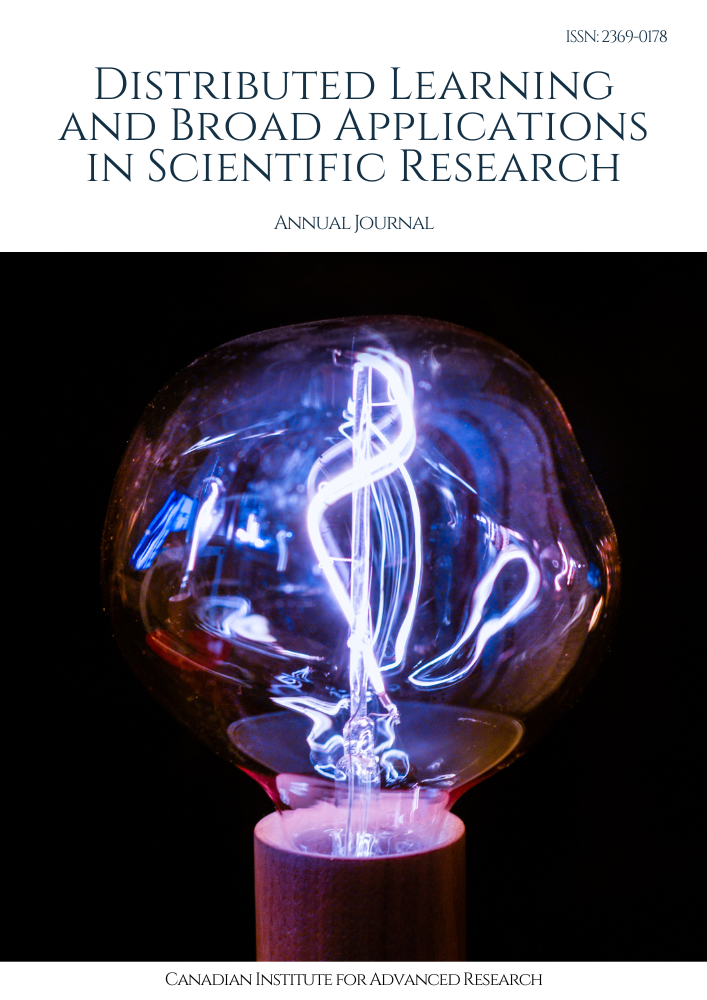Machine Learning for Enhancing Autonomous Vehicle Decision-Making in Urban Environments
Keywords:
Machine Learning, Autonomous Vehicle Decision-MakingAbstract
An autonomous vehicle (AV) can be defined as a self-driving or robotic vehicle that is capable of traveling without human command. These vehicles are seen as an integral part of modern, smart cities. Although AV technology is not a new concept, it has only recently been integrated into urban infrastructures. From the development of partial automation, the first experiments with autonomous public transport in urban environments have been conducted to help last mile mobility solutions. This development has gained interest from companies and governments worldwide to continue this work in the hopes of eventually constructing fully connected, automated, smart cities. By doing so, a range of functions could aid and improve urban living by targeting urban mobility issues, as well as addressing other urban challenges like pollution and improving care services.
Downloads
References
Tamanampudi, Venkata Mohit. "Automating CI/CD Pipelines with Machine Learning Algorithms: Optimizing Build and Deployment Processes in DevOps Ecosystems." Distributed Learning and Broad Applications in Scientific Research 5 (2019): 810-849.
Pal, Dheeraj Kumar Dukhiram, et al. "AIOps: Integrating AI and Machine Learning into IT Operations." Australian Journal of Machine Learning Research & Applications 4.1 (2024): 288-311.
Pasupuleti, Vikram, et al. "Enhancing supply chain agility and sustainability through machine learning: Optimization techniques for logistics and inventory management." Logistics 8.3 (2024): 73.
J. Singh, “Robust AI Algorithms for Autonomous Vehicle Perception: Fusing Sensor Data from Vision, LiDAR, and Radar for Enhanced Safety”, Journal of AI-Assisted Scientific Discovery, vol. 4, no. 1, pp. 118–157, Apr. 2024
Alluri, Venkat Rama Raju, et al. "DevOps Project Management: Aligning Development and Operations Teams." Journal of Science & Technology 1.1 (2020): 464-487.
Machireddy, Jeshwanth Reddy. "Assessing the Impact of Medicare Broker Commissions on Enrollment Trends and Consumer Costs: A Data-Driven Analysis." Journal of AI in Healthcare and Medicine 2.1 (2022): 501-518.
Ahmad, Tanzeem, et al. "Hybrid Project Management: Combining Agile and Traditional Approaches." Distributed Learning and Broad Applications in Scientific Research 4 (2018): 122-145.
Tamanampudi, Venkata Mohit. "AI-Powered NLP Agents in DevOps: Automating Log Analysis, Event Correlation, and Incident Response in Large-Scale Enterprise Systems." Journal of Artificial Intelligence Research and Applications 4.1 (2024): 646-689.
J. Singh, “The Ethical Implications of AI and RAG Models in Content Generation: Bias, Misinformation, and Privacy Concerns”, J. Sci. Tech., vol. 4, no. 1, pp. 156–170, Feb. 2023
S. Kumari, “Optimizing Mobile Platform Security with AI-Powered Real-Time Threat Intelligence: A Study on Leveraging Machine Learning for Enhancing Mobile Cybersecurity”, J. of Art. Int. Research, vol. 4, no. 1, pp. 332–355, Jan. 2024.
Praveen, S. Phani, et al. "Revolutionizing Healthcare: A Comprehensive Framework for Personalized IoT and Cloud Computing-Driven Healthcare Services with Smart Biometric Identity Management." Journal of Intelligent Systems & Internet of Things 13.1 (2024).
Bonam, Venkata Sri Manoj, et al. "Secure Multi-Party Computation for Privacy-Preserving Data Analytics in Cybersecurity." Cybersecurity and Network Defense Research 1.1 (2021): 20-38.
Tamanampudi, Venkata Mohit. "Leveraging Machine Learning for Dynamic Resource Allocation in DevOps: A Scalable Approach to Managing Microservices Architectures." Journal of Science & Technology 1.1 (2020): 709-748.
Downloads
Published
Issue
Section
License

This work is licensed under a Creative Commons Attribution-NonCommercial-ShareAlike 4.0 International License.
License Terms
Ownership and Licensing:
Authors of research papers submitted to Distributed Learning and Broad Applications in Scientific Research retain the copyright of their work while granting the journal certain rights. Authors maintain ownership of the copyright and have granted the journal a right of first publication. Simultaneously, authors agree to license their research papers under the Creative Commons Attribution-NonCommercial-ShareAlike 4.0 International (CC BY-NC-SA 4.0) License.
License Permissions:
Under the CC BY-NC-SA 4.0 License, others are permitted to share and adapt the work, as long as proper attribution is given to the authors and acknowledgement is made of the initial publication in the journal. This license allows for the broad dissemination and utilization of research papers.
Additional Distribution Arrangements:
Authors are free to enter into separate contractual arrangements for the non-exclusive distribution of the journal's published version of the work. This may include posting the work to institutional repositories, publishing it in journals or books, or other forms of dissemination. In such cases, authors are requested to acknowledge the initial publication of the work in this journal.
Online Posting:
Authors are encouraged to share their work online, including in institutional repositories, disciplinary repositories, or on their personal websites. This permission applies both prior to and during the submission process to the journal. Online sharing enhances the visibility and accessibility of the research papers.
Responsibility and Liability:
Authors are responsible for ensuring that their research papers do not infringe upon the copyright, privacy, or other rights of any third party. Scientific Research Canada disclaims any liability or responsibility for any copyright infringement or violation of third-party rights in the research papers.
If you have any questions or concerns regarding these license terms, please contact us at editor@dlabi.org.



